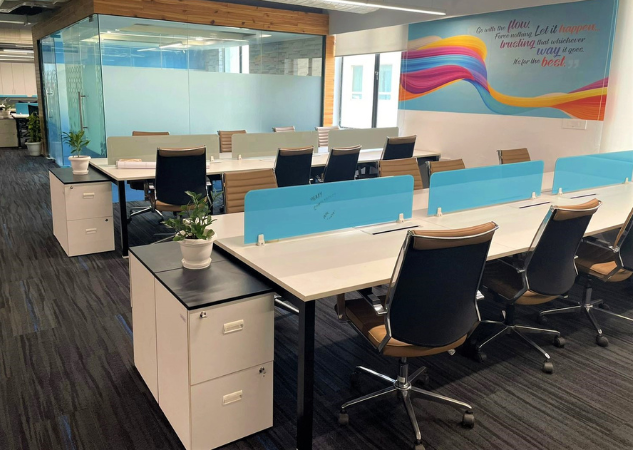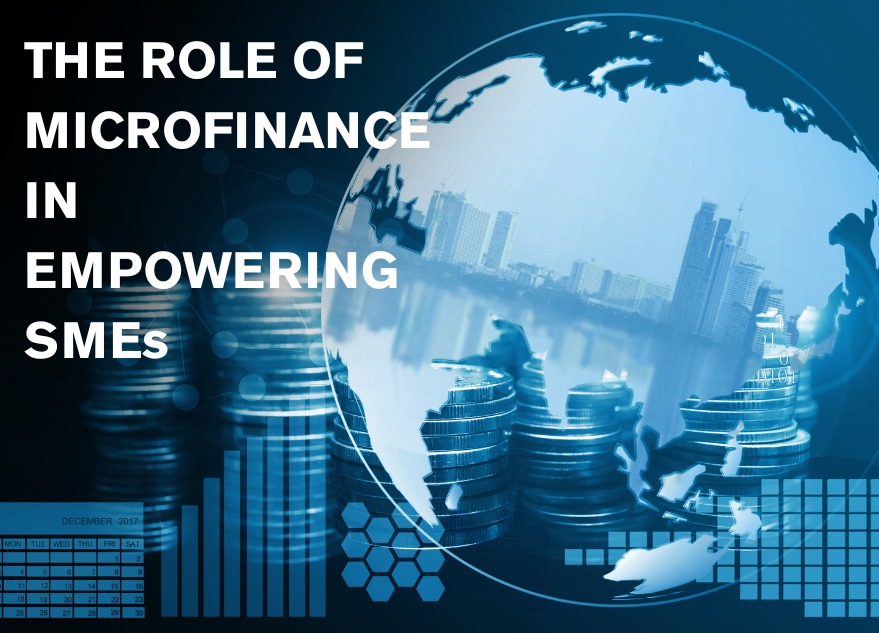Microfinance plays a crucial role in empowering Small and Medium Enterprises (SMEs) by providing financial services to those who traditionally lack access to conventional banking systems. This support can drive economic growth, alleviate poverty, and foster entrepreneurship. In this post, you will learn about key points illustrating the role of microfinance in empowering SMEs.
💡 Are you looking for Coworking space in Gurgaon, Noida or Delhi? We are just a call away.
Call Now: 08999 828282
7 Key Points that Illustrating the Role of Microfinance in Empowering SMEs
- Access to Capital
- Promoting Financial Inclusion
- Enhancing Entrepreneurial Skills
- Facilitating Market Access
- Encouraging Innovation and Adaptation
- Supporting Women Entrepreneurs
- Fostering Community Development

1. Access to Capital
- Challenge: Many SMEs struggle to secure funding from traditional banks due to strict collateral requirements, lack of credit history, and the perceived risk associated with small businesses.
- Solution: Microfinance institutions (MFIs) offer loans with more flexible terms, lower collateral requirements, and tailored financial products. This access to capital enables SMEs to start, sustain, and expand their operations.
2. Promoting Financial Inclusion
- Challenge: SMEs, particularly in developing regions, often operate in informal sectors and are excluded from formal financial systems.
- Solution: Microfinance bridges this gap by offering financial services to underserved populations, thus integrating SMEs into the formal economy. This inclusion enhances their financial stability and growth prospects.
Also Read: The Financial Impact of Employee Retention on SMEs
3. Enhancing Entrepreneurial Skills
- Challenge: SMEs frequently lack the managerial and technical skills necessary for effective business operations.
- Solution: Many MFIs provide training and capacity-building programs alongside financial services. These programs cover essential areas such as financial literacy, business planning, marketing, and operational efficiency, empowering entrepreneurs to manage their businesses more effectively.
4. Facilitating Market Access
- Challenge: SMEs often face difficulties in accessing broader markets due to limited networks and resources.
- Solution: Microfinance programs sometimes include support for market linkages, helping SMEs connect with larger markets, suppliers, and distributors. This can be through trade fairs, networking events, or partnerships with larger corporations.
5. Encouraging Innovation and Adaptation
- Challenge: Limited resources constrain the ability of SMEs to innovate or adapt to changing market conditions.
- Solution: Microfinance enables SMEs to invest in new technologies, diversify their product offerings, and improve their competitive edge by providing the necessary financial resources. This can lead to increased productivity and resilience against market fluctuations.
💡 SMBs looking for HR, Marketing, Technology and Funding solutions for their business.
Call Hello Jarvis 994 8000 800
6. Supporting Women Entrepreneurs
- Challenge: Women often face additional barriers in accessing finance, such as gender discrimination and lower asset ownership.
- Solution: Microfinance has a significant impact on empowering women entrepreneurs by providing them with the necessary financial support and fostering gender equality in business. This not only helps in personal development but also contributes to broader social and economic benefits.
7. Fostering Community Development
- Challenge: Economic activities in many regions are not diversified, limiting overall community development.
- Solution: By supporting SMEs, microfinance contributes to the diversification of local economies. Successful SMEs can create jobs, stimulate local supply chains, and contribute to the economic development of their communities.
To sum up, Microfinance plays a pivotal role in empowering SMEs by addressing their financial needs and providing the tools necessary for sustainable growth. This support is critical for fostering entrepreneurship, promoting financial inclusion, and driving economic development, especially in underserved regions.
The Office Pass (TOP) co-working spaces available in Delhi and NCR are seen as highly productive. TOP offers all the modern-day facilities and relaxation areas to employees, keeping them motivated throughout the day for enhanced productivity at work. Contact us for more details at 08999 828282.
FREQUENTLY ASKED QUESTIONS (FAQS):
Question: What is microfinance, and how does it differ from traditional banking?
Answer: Microfinance refers to financial services, including small loans, savings, insurance, and other financial products, provided to individuals or small businesses that lack access to conventional banking services. Unlike traditional banking, microfinance focuses on the underserved populations and typically involves smaller loan amounts, simpler application processes, and more flexible terms.
Question: How can microfinance help in the growth of SMEs?
Answer: Microfinance can provide the necessary capital for SMEs to start, sustain, and expand their businesses. Access to microloans enables SMEs to invest in inventory, equipment, marketing, and other business activities, which can lead to increased productivity, revenue growth, and job creation.
Question: What types of microfinance services are available to SMEs?
Answer: Microfinance services for SMEs include microloans, micro-savings accounts, micro-insurance, and financial education. These services help SMEs manage their finances, mitigate risks, and build a credit history, which can be essential for future growth and access to larger financing options.
Question: Who are the primary providers of microfinance to SMEs?
Answer: Primary providers of microfinance include microfinance institutions (MFIs), non-governmental organizations (NGOs), credit unions, and some commercial banks. These institutions are often mission-driven and focus on financial inclusion.
Question: What are the challenges SMEs face in accessing traditional financing?
Answer: SMEs often face challenges such as lack of collateral, insufficient credit history, high transaction costs, and complex loan application processes. These barriers make it difficult for them to secure loans from traditional banks, leading them to seek alternative financing options like microfinance.
Question: How does microfinance contribute to economic development?
Answer: By providing financial services to SMEs, microfinance fosters entrepreneurship, creates jobs, and stimulates local economies. Successful SMEs contribute to economic diversification, innovation, and resilience, thereby promoting overall economic development.
Question: What are the risks associated with microfinance for SMEs?
Answer: Risks include over-indebtedness, high-interest rates, and lack of adequate financial literacy among SME owners. If not managed properly, these risks can lead to financial distress for SMEs and impact their sustainability.
Question: How can microfinance institutions ensure responsible lending to SMEs?
Answer: MFIs can ensure responsible lending by conducting thorough credit assessments, providing financial literacy training, setting realistic loan amounts based on the SME’s repayment capacity, and offering flexible repayment terms. Regular monitoring and support can also help SMEs manage their finances effectively.
Question: What role does financial literacy play in the success of SMEs utilizing microfinance?
Answer: Financial literacy is crucial for the success of SMEs as it helps business owners make informed decisions about managing debt, budgeting, saving, and investing. Improved financial literacy can enhance the impact of microfinance by ensuring that SMEs use the funds effectively and sustainably.
Question: Can microfinance lead to long-term financial inclusion for SMEs?
Answer: Yes, microfinance can lead to long-term financial inclusion by helping SMEs build a credit history, improve their financial management skills, and demonstrate their creditworthiness. Over time, this can enable SMEs to access larger loans and other financial products from traditional banks, thus integrating them into the formal financial system.



